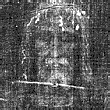Results from This Site: 161 - 170 of 228 total results for 1988 carbon dating
-
carbon dating. In the first contribution "The Turin Shroud: An Editorial Postscript" Prof. Hall imparts the surprising information "In early 1978 I was asked by the Turin authorities whether radiocarbon
-
taking of the samples from the Shroud on 21 April 1988, pointing out that Giovanni Riggi was clearly in charge, with Dr. Tite of the British Museum the only scientist allowed near the Shroud, and the
-
October 1988] is to relate a personal encounter with the Shroud that occurred earlier this year. During the past twelve months I have been under medical investigation at St. Richard's Hospital, Chichester
-
On October 13, 1988 occurred the "Black Day" in the history of the famous Holy Shroud of Turin. It had been radiocarbon dated between 1260 and 1390. Thus it was proclaimed by a single scientific discipline
-
and carbon 13. It is possible to test this theory by isotope analysis of the cellulose of the Shroud. The atoms of oxygen and hydrogen in the cellulose must have been transformed into the higher isotopes
-
1st century burial cloth. In 1988, three laboratories performed a Carbon-14 (C14) dating test on the Shroud with the results placing the putative origin of the cloth between 1260 and 1390 AD. In many
-
In order to ensure that ample carbon for dating survives after pretreatment, the weight of each cloth sample (that is, shroud and controls) will be 40 mg. All the samples will be given to the laboratories
-
radiocarbon dating purposes sometime during the next year, with results expected to be released around Easter of 1988. Following the announcement that the testing would take place, The Times published
-
and discusses his new hypothesis regarding the 1988 radiocarbon dating of the Shroud, based on possible c14 enrichment of linen due to the CO (carbon monoxide) in the atmosphere. According to Jackson,
-
effectué en 1988 par trois laboratoires universitaires — Arizona, Oxford et Zurich — sous la supervision du British Museum — qui conclurent à une datation dans l’intervalle 1260-1390 de n.
